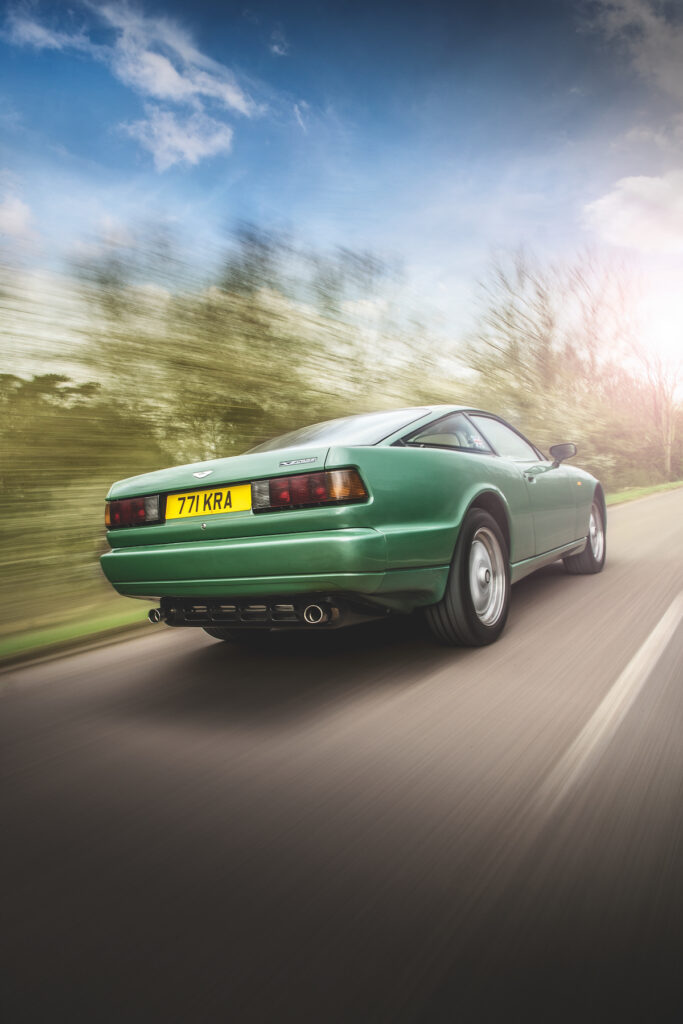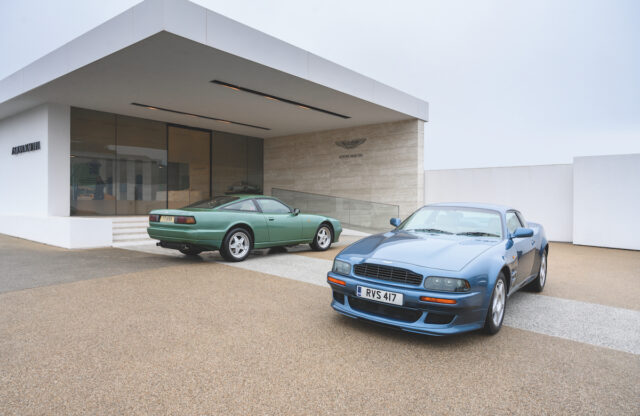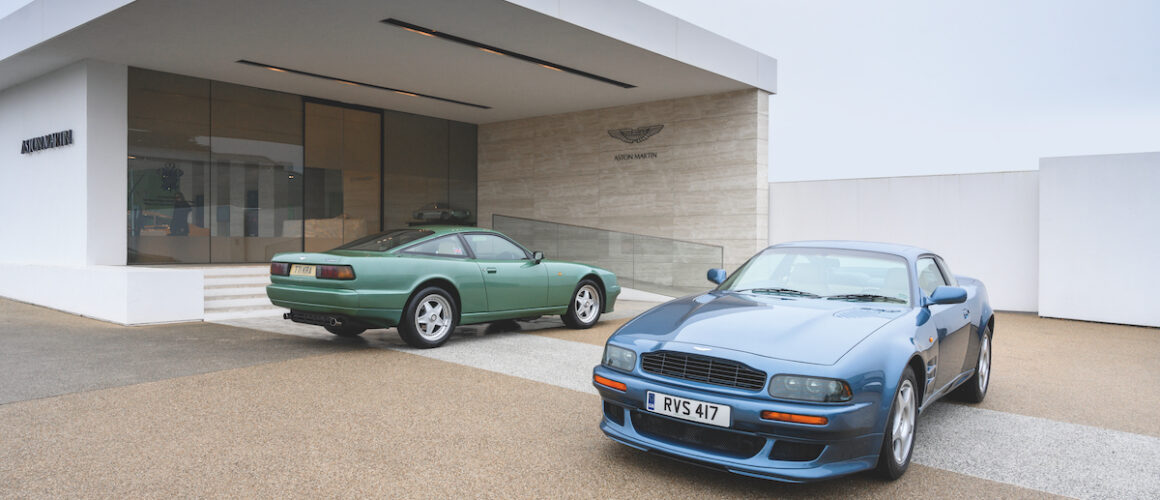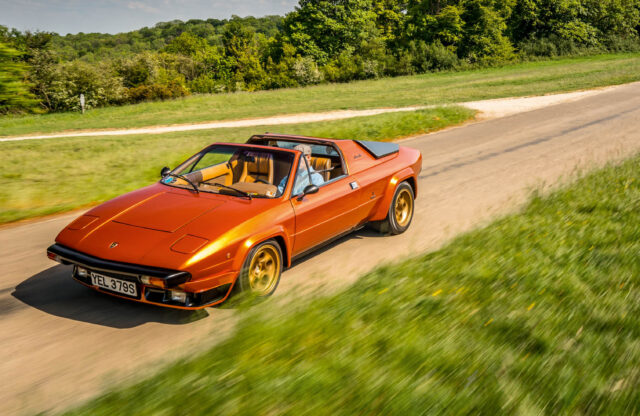The Aston Martin Virage was panned by the press, but saved the company. We reunite it with its designer John Heffernan 30 years on
When Aston Martin finally retired the V8 after 20 years, it was well past its prime, resembling an old pop star, a faded idol clinging to a greying fan-base. Production had fallen to just a dribble and was a grave concern for Victor Gauntlett. Even Giuseppe Mittino’s 1986 V8 Zagato, as startling and modern as it was, couldn’t lift the image of Newport Pagnell’s old campaigner. Aston was in serious danger of becoming Buckinghamshire’s Morgan, a company then resolutely stuck in yesteryear.
It was definitely time for change. The V8’s heir was DP 2034: the Virage. It marked the opening page of Aston Martin’s last hand-fabricated chapter yet, despite its importance, it is also arguably one of the marque’s most overlooked models. A life less extraordinary nestling amid A-list sisters; an Aston Martin as forgotten now as Cathy Gale in The Avengers or Mick Taylor’s spell in The Rolling Stones. A sorry affair illustrated by the hitherto unmarked passing of its 30th anniversary, and not even so much as a petrol station bouquet…
This Aston Martin for the 1990s wasn’t helped by the Bond franchise being paralysed in court, so, unlike the DB5, DBS and V8, its profile didn’t benefit from a sprinkle of 007 stardust. Instead the Virage was, and remains, a bespoke article bereft of licence-to-kill glamour. It’s a GT that – set against today’s traffic with its Mr Creosote waistline, monster truck wheels, rhinoceros surface detailing and angry frontal aspects – suggests a welcome reminder of understated calm, English sobriety and genuine exclusivity.
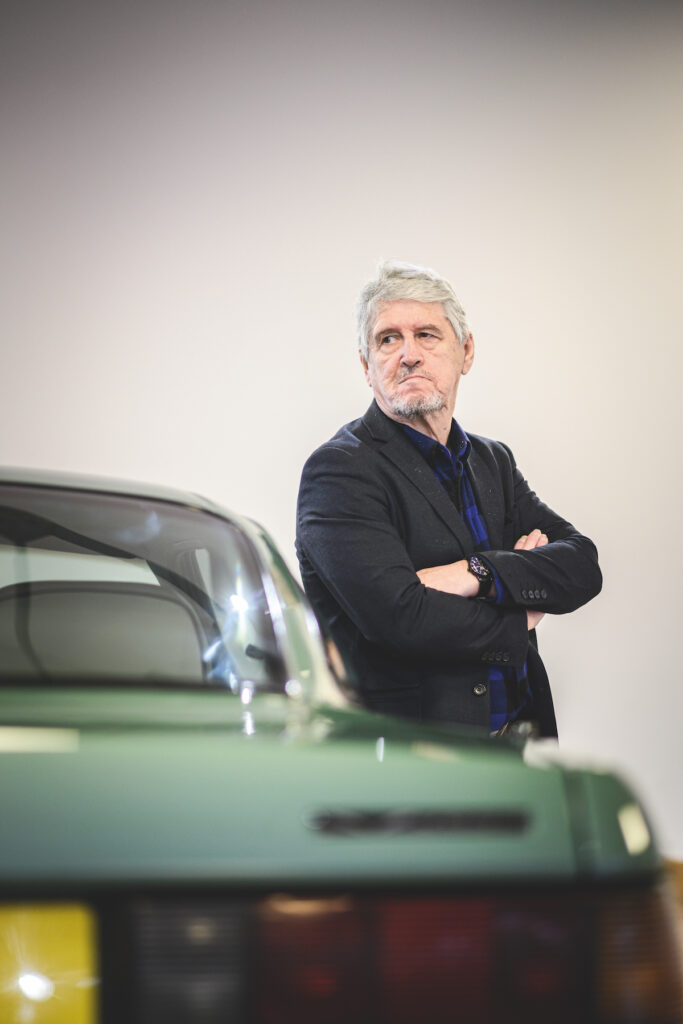
Now Octane has been welcomed to the Virage’s birthplace, to Aston Martin Works in Newport Pagnell, where the Touring Superleggera DB legend first took shape in 1955. We’re in the Olympia building, part of the beautifully preserved and updated Works facility. Through the drizzle, on the other side of Tickford Street, looms the old Tickford Works – a forlorn red-brick block, boarded-up and blinded by wooden cataracts. Sitting nearby is Sunnyside, the old administrative building that looks more like a suburban pub than a one-time hive of industry management.
Pointing out the lay of the land is John Heffernan, the Virage’s designer and one half of Heffernan Design Associates, an informal partnership with Ken Greenley. After studying industrial design and moving into the car business, Heffernan worked for General Motors (at Vauxhall and in Michigan) and Audi. His time in the States, for someone who names Bill Mitchell along with Giorgetto Giugiaro amongst his influences, must have been something of a pilgrimage.
When freelance, and working for the British Airports Authority followed by Leyland Bus, Heffernan also taught part-time on the Royal College of Art’s transportation design course. Greenley – another Vauxhall alumnus – was by then head of the department, and the pair won the contract for the Panther Solo. This was the start of an immensely busy period for the duo. Hot on the heels of the Solo was work for Rolls-Royce on Bentley Project 90, then the Corniche proposal and ultimately the Continental R – the first standalone Bentley for decades.
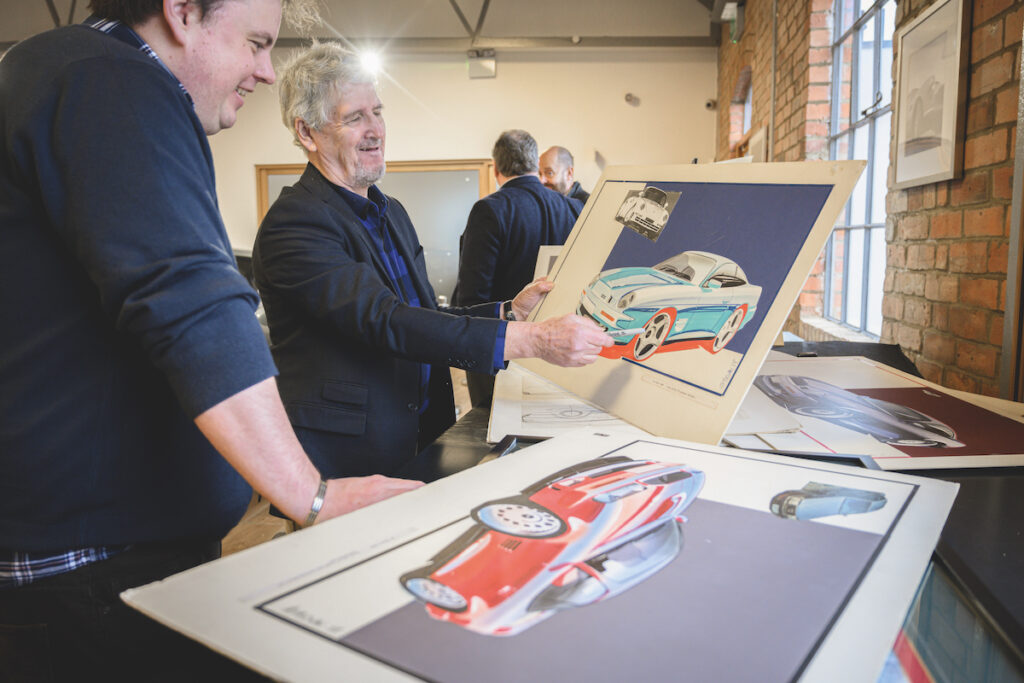
‘Victor Gauntlett phoned Ken and said “Right, you’ve done a Panther, you’ve done a Bentley – you’re probably about right for us now.” Very laconic, was Victor. The brief was to replace Bill Towns’ DBS, which I’d always liked a lot, but it had stopped selling.
‘The only brief we were given was a chassis drawing, which was a shortened Lagonda, and we were told to do a model or two for a competition. I must say we produced two very good models because we were used to General Motors’ way of doing things – very professional. So ours were fully painted, fully finished models. We were never shown the competing designers’ work, but I’ve subsequently seen them and nobody else tried that. Instead they just showed unfinished clays and things. Bill Towns was so annoyed at not being chosen automatically that he didn’t try very hard. Bill was a very good designer but he obviously wasn’t very bothered. Anyway, mine was chosen because Victor thought Ken’s was more of a Corvette than an Aston and we got the job.’
The design was limited by the shortened Lagonda platform, Aston’s build techniques, and budget – but it was the Lagonda DNA that made the biggest, ahem, impact. The retention of its boxy bumper infrastructure dictated a less rounded planform than Heffernan desired. Plus, the company’s experience with pop-up headlamps meant that those on his original proposal were exchanged for fixed lamps from VAG. So just as those rear DBS lamps followed Towns from the Rootes Group to Aston Martin, here Audi 200 headlamps followed Heffernan from Ingolstadt to Newport Pagnell.
Money would be the biggest hurdle, however: Aston sought to save costs when introducing its first home-grown model for many years. One budget-shaving initiative led to a potentially disastrous mistake that almost endangered the car that would arguably save Aston Martin.
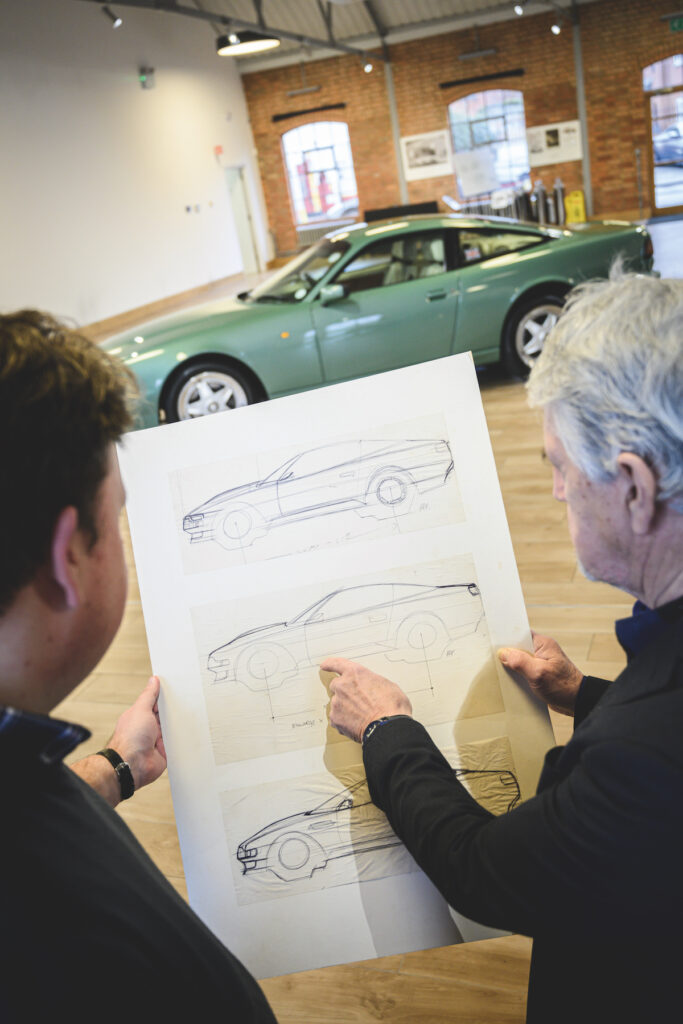
‘We were never seen as “insiders” by Aston and we had a bit of a hard time on the Virage,’ says John. ‘They didn’t have much budget at all.Victor did what he could, but he wasn’t like Ford! The whole programme probably cost as much as a Ford doorhandle, so they jumped some stages, which really upset us. They wouldn’t do a full-size clay model, and went straight into hardwood from our scale model – every designer will tell you that is an impossible situation. When you’ve got a full-scale model, it’s the surfacing, the proportions and the play of light on the surfaces that you tune.
‘On a car, five or 10mm is very important to change the proportions. The full-size wood model was not right, because they’d made a mistake with the zero grid line. So they chopped the roof down 100mm to preserve the overall height and they wouldn’t let us change it. We were pretty worried about the whole thing – we were also doing all the packaging too (the legals and things). We thought that
we were going to have to resign, but resigning would have been a disaster on such a high-profile project.
‘We hired an ex-Vauxhall colleague, technical draughtsman Bill Hunt, and he noticed that the seat H-point was 100mm too low compared to the windscreen base point, creating an illegal vision angle. It was enough for us to cut the top of the model off and amend the problem in clay. This did two things for us: it got us back to the right proportions and the engineering team at Newport had to accept it because it was their mistake! Anyway we got the car out within two years and – at the time – to a great reception.’
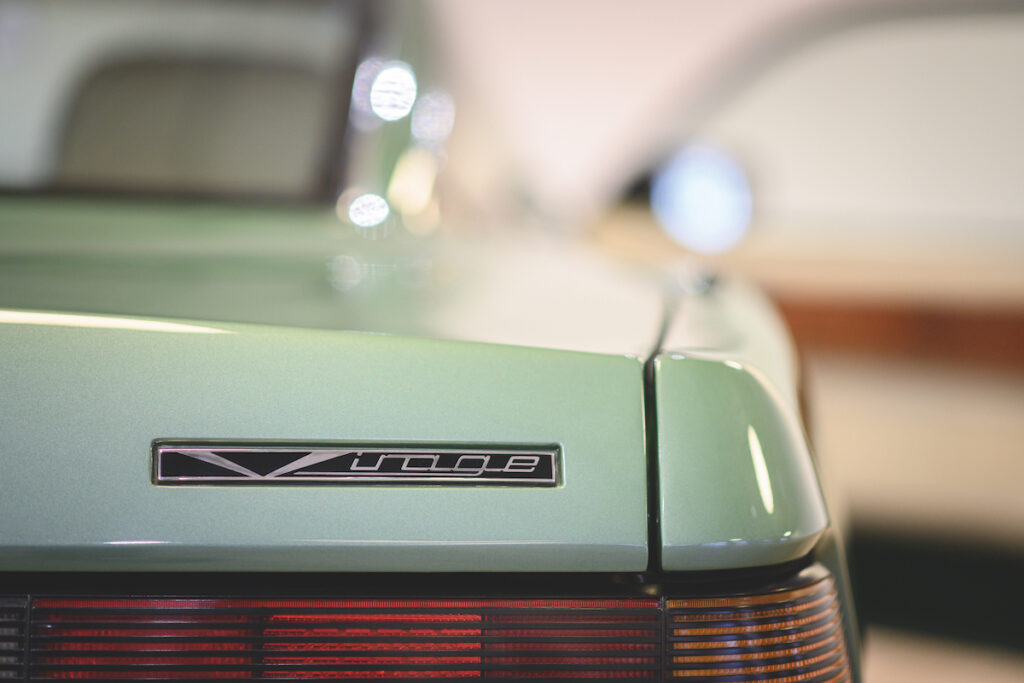
Paul Spires, president of Aston Martin Works Ltd, joined Newport Pagnell in 2012. Prior to this he had been the Aston Martin sales manager at HWM and so he has first-hand experience of selling the new Aston. We discuss the role of Works today and how they have started to see an increase in Virages returning home, finally, as appreciated classics.
He says: ‘When the Virage came out it was radically different. There really wasn’t a carry-over component on the car – chassis, body, engine [the Calloway cylinder head, but the architecture of the bottom end was pretty much the same]. Expectations were high.
‘Having come from owning X-pack Vantages and driving those cars daily, the first time I drove the Virage it was a little disappointing – but we came out of 425bhp cars and into 330bhp cars. I think we all, kind of, discounted the horsepower thing and thought it would be really quick.’ It was a sentiment echoed by the motoring press at the time and a recollection from Heffernan now that ‘Victor did admit that it should’ve been faster and more exciting’. All of which explains the later 465bhp/460lb ft 6.3-litre conversion that was introduced under Gauntlett’s successor, Walter Hayes.
Is this all still relevant though, from a classic car perspective? After whirring into position behind the 200mph speedo and 7000rpm tacho of Keith Artus’s beautifully presented Virage, we’re about to find out.
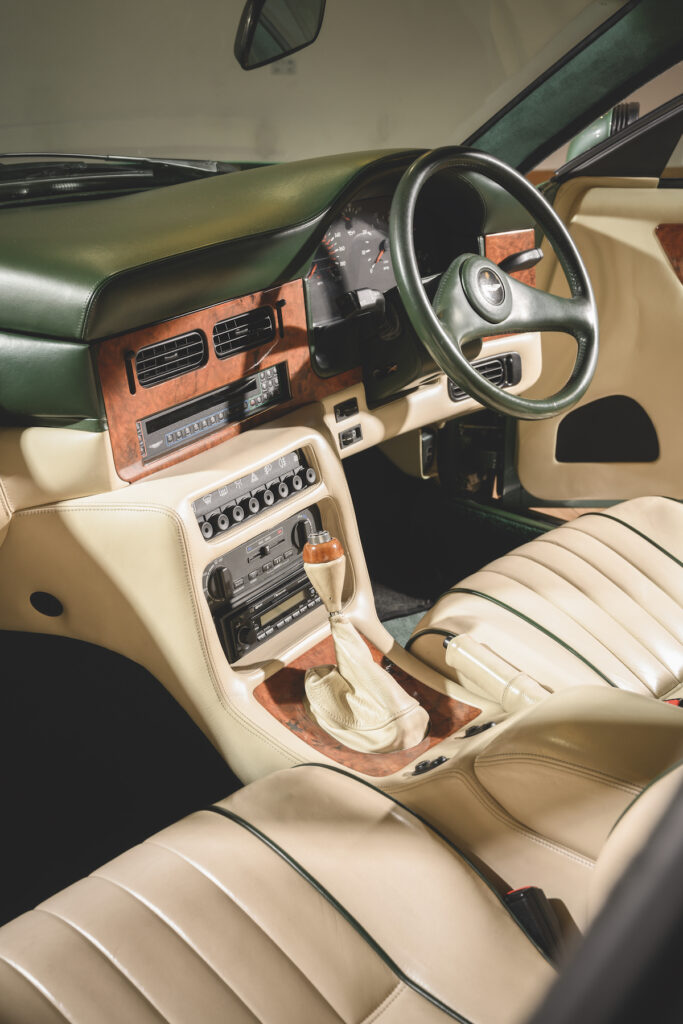
The Marek V8 may wear snazzy 32-valve Calloway headwear – boosting output to 330bhp at 6000rpm with 350lb ft at 4000rpm – but its 5.3 litres snarl into life with a familiar rabidity. Exiting Works and accelerating up Tickford St, the trim gently twitters and the Torqueflite slurs between its three speeds. On kickdown the V8 sits up and pays attention as the note lifts from preoccupied hum to chant. Then, above 3000rpm, it turns into something raunchier with an urgent offbeat menace. Customers willing to eschew the ZF five-speed manual soon benefited from a new four-speed auto that was more responsive when dealing with the Virage’s 3940lb (1787kg) mass.
The power steering is nicely weighted if not hugely communicative, but it co-operates diligently with the front suspension. The brakes could be better – they need a well-timed shove – but the Virage corners flat and with grip aplenty on wet and filthy roads. As the miles increase, so does your understanding of the Aston’s character. The spacing of ratios – and the fact that this is just one of 355 coupés built – banishes notions of holding gears and tackling corners with derring-do and glowing knuckles. Undoubtedly, if you were to slip into one of these cars pumped with expectations of snarling, neck-snapping adrenaline, then you would be hurtling headlong into an anti-climax. Albeit one that is capable of 0-60mph in six seconds and a maximum speed of 155mph. No, this is not a muscle car, this is a relaxed and refined GT – a continuation of the family business that started with the DB6 and sired DBS, DBS V8 and V8. Relax, enjoy the interior – whether playing ‘spot the switchgear source’ or feeling spoilt by so much Wilton tufted, veneered and leathery decadence.
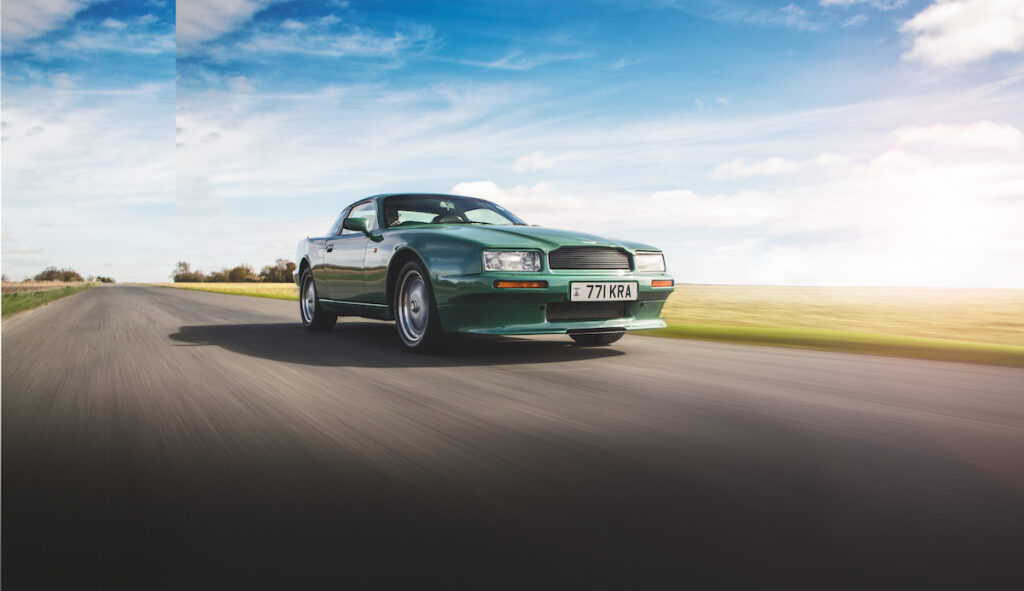
Visibility past the snake-hipped glasshouse pillars is, like the view ahead, wonderful, allowing you to enjoy admiring glances from passers-by or to caddishly indulge in gobbling up delicious roads. Who could possibly dismiss such a smooth, swift GT that perfectly balances dynamics with svelte yet muscular styling?
The final word really should be left to John Heffernan: ‘It was meant to be a conservative car; it wasn’t sensational. A lot of the English magazines were critical of Aston building a front-engined car when the Italians had gone mid-engined. Now 30 years later, Ferrari is still coming out with lovely front-engined designs – it’s twists and turns, isn’t it?
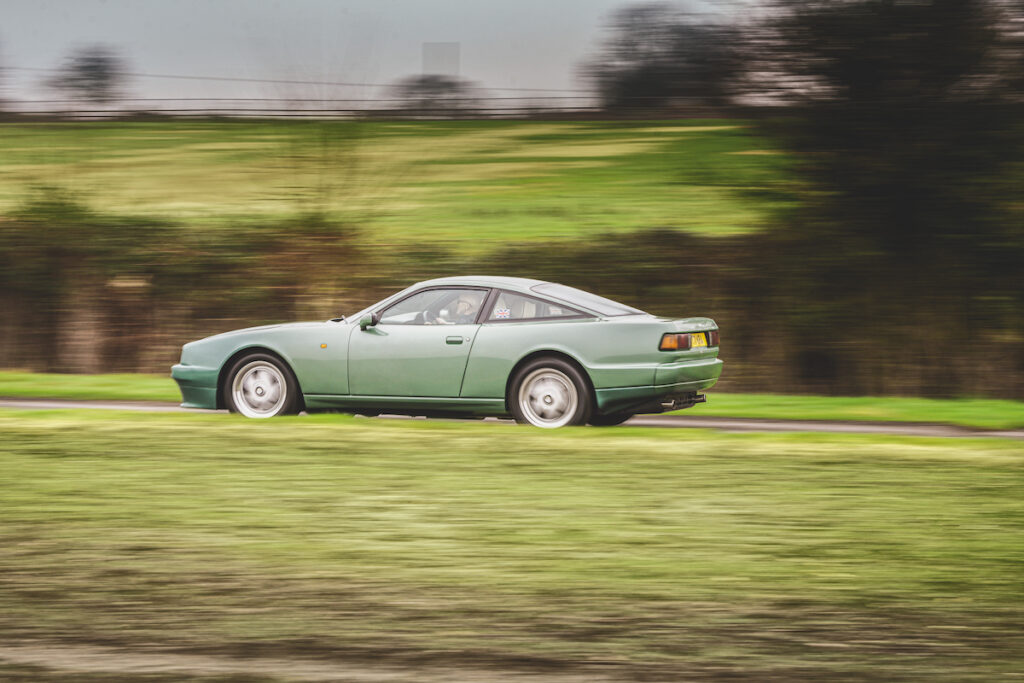
‘It was always my ambition to design an Aston Martin. At school I would draw them; I still have those drawings. It was a pleasure and an honour, and I was very grateful to Ken for his knowledge and support throughout the project, even though he was busy with college and developing the Solo 2. We were doing a Bentley and an Aston Martin at the same time! It was a moment in motoring history before every manufacturer had its own studio.’
He then takes another look around, gazing over at Sunnyside. ‘A lot of money came in from deposits for the Virage. One day I was in the office with Victor and he was sitting there rubbing his hands with glee because there was so much money and he’d had a hard time during the previous years. It gave us the chance to do the Vantage. Obviously, we had to keep most of the hard points, but we put a new roof on it and new wing panels. Personally, I was much happier with the Vantage – but you have to realise that the Virage was before Ford acquired Aston and it was all being developed with hardly any funding. Considering that, the Virage is a nice car.’
There’s a pause. Then: ‘It’s funny, it’s over 30 years ago now, something like that…’
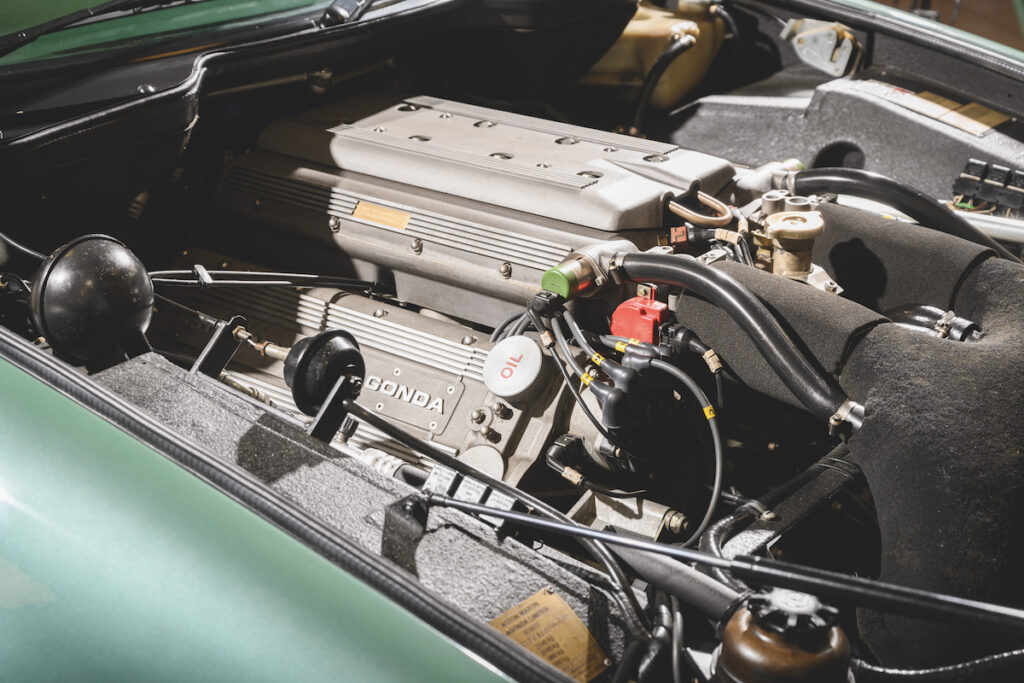
Factfile – Aston Martin Virage
Engine 5341cc V8, DOHC per bank, 32-valve, electronic fuel injection and engine management Power 330bhp @ 6000rpm Torque 350lb ft @ 3700rpm Transmission Five-speed manual or three/four-speed auto, rear-wheel drive Steering Rack and pinion Suspension Front: double wishbones, coil springs, anti-roll bar. Rear: de Dion axle, coils springs, anti-roll bar Brakes Discs, vented at front Weight 1787kg Top speed 155mph 0-60mph 6.0sec
This article was originally published in Octane 204, June 2020
